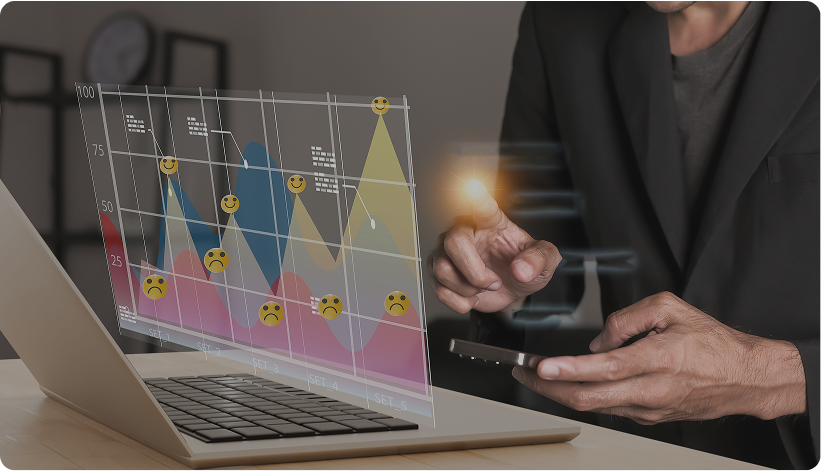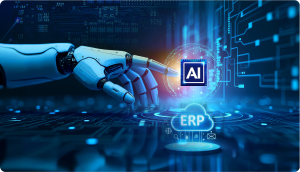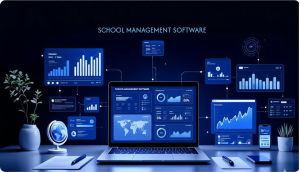
Imagine this: A customer browses your website, adds items to their cart, abandons it, then walks into your physical store the next day and buys something completely different. What made them change their mind? Why didn’t they complete their online purchase? These are the questions modern businesses must answer, and they all begin with Customer Behavior Analysis.
In a world where customers effortlessly switch between online and offline channels, understanding what drives them is more critical than ever. The rise of omnichannel shopping has blurred the lines between physical stores and digital platforms, making it essential for businesses to grasp the full scope of customer behavior.
Without that deep behavioral understanding, brands risk missed opportunities, poor experiences, and ultimately, customer churn.
In this blog, we explore how to analyze, unify, and apply customer behavior insights across both retail environments and highlight how AI is revolutionizing this process.
Core Elements of Customer Behavior Analysis
Behavioral Data Collection
To truly understand your customers and what influences their choices, you first need to gather the right data from the right places.
In physical stores,
several tools help track how people behave:
- POS systems record what people buy, how much they spend, and how often they shop.
- Loyalty cards show repeat visits and customer preferences.
- Footfall tracking, RFID tags, and sensors help you see where customers go in the store, how long they stay, and what catches their attention.
Online,
there’s just as much valuable data:
- Website analytics and mobile apps show how many people visit, what they click, and when they leave.
- Session recordings let you watch how customers move through your site to find any pain points.
- Surveys and reviews share direct feedback from customers.
- Social media reveals trends, mentions, and early signs of issues.
- CRM systems bring all this data together to build a complete picture of each customer.
Today’s customers leave behind useful clues everywhere; they just need to be collected and connected. That’s the first step to truly understanding their behavior.

Analysis Techniques and Tools
Once you’ve got the data, the next step is making sense of it, and that’s where the real magic happens.
- Statistical models help you spot trends, like how often people buy or when they stop visiting.
- Machine learning and NLP (natural language processing) go deeper. They find hidden patterns, understand reviews or feedback, and can even guess what a customer might do next.
- Heatmaps and journey maps show where people click, scroll, or get stuck on your website.
- Conversion funnels help you see where customers drop off before making a purchase.
Here’s where AI steps in:
AI doesn’t just analyze data; it learns from it. It can handle tons of information from different places, find patterns quickly, and predict what customers are likely to do. That makes decision-making faster, smarter, and way more accurate than old-school methods.
Deriving Meaningful Insights
Data by itself doesn’t help much; it’s the insights and actions you take from it that really matter. With AI-powered customer behavior analysis, you can go from “just data” to smart decisions that drive real results.
Here’s how it works:
- RFM Analysis (Recency, Frequency, Monetary value): Helps you find your most loyal customers and spot those who might be slipping away.
- Cohort Segmentation: Groups customers based on shared behaviors over time so you can see what works best for different types of buyers.
- Funnel Analysis: Shows where customers are leaving in the buying process—and helps you fix it.
These tools help answer some important questions:
- What’s making people buy?
- When are they coming back?
- Why are they leaving without buying anything?
- What drives long-term loyalty?
With the right insights, you’re not just guessing; you’re making informed, confident moves that work.
Segmentation Approaches
No two customers are exactly alike, but many show similar patterns in how they shop, browse, and interact. That’s where segmentation comes in.
You can group customers based on things like:
- Demographics – age, gender, location, etc.
- Psychographics – their interests, values, and lifestyle.
- Purchase history – what they’ve bought and how often.
- Channel usage – whether they shop in-store, online, or both.
But the real power comes from going beyond just one channel.
With AI, you can connect the dots between a customer’s online and offline behavior. Instead of having scattered data in different systems, AI brings it all together to create a complete, unified view. This allows you to segment your audience more meaningfully and deliver personalized experiences that truly connect.
Hyper-Personalization
Generic marketing doesn’t work anymore.
With AI, brands can now tailor content, offers, and experiences in real time—based on what each customer does both online and offline.
Online behavior includes clicks, page visits, and cart history.
Offline behavior includes what they buy in-store, how often they visit, or how they interact with staff.
For example: If a customer browses sneakers online but later visits a store to check out running gear, AI can send them a special offer for performance shoes right through an app or SMS.
This kind of personalization isn’t just about suggesting products. It’s about making every interaction feel useful and relevant to that customer.
![]()
Tracking Customer Behavior Across Physical and Digital Touchpoints
In-Store Tracking:
- Sensors monitor movement.
- Loyalty data reveals preferences.
- POS logs capture buying patterns.
Online Tracking:
- Cookies track browsing habits.
- Session flows show where users spend time.
- Cart activity highlights intent.
The Challenge:
Customer data often sits in different systems. What someone does online isn’t linked to what they do in-store, so it’s hard to see the full picture.
The Solution:
AI helps connect the dots.
It pulls data from your website, app, store, and other tools, then cleans and combines it into one clear profile for each customer. With everything in one place, you can offer a smooth, personalized experience, whether they’re shopping in person or online.
Why Customer Behavior Analysis is Business-Critical Today
- Better Experiences – AI helps you show the right things at the right time, making customers happy.
- Keeps Customers – AI spots when someone might stop buying, so you can act early.
- More Sales – Knowing how people shop helps you improve your website, prices, and messages.
- Smarter Planning – You can see what’s selling, who’s buying, and when, so you can plan better.
What Businesses Can Learn from Behavioral Data: AI’s Deeper Insights
Here’s what modern Customer Behavior Analysis powered by AI reveals:
- Purchase triggers & timing: AI can detect when customers are most likely to buy.
- Drop-off points: AI-driven journey mapping highlights where users lose interest.
- Product bundling patterns: Find popular combinations based on cart analysis.
- Channel-specific trends: Discover behaviors like browsing online but buying in-store (or vice versa).
- Micro-segmentation: Create ultra-targeted campaigns for narrow customer niches.
- Sentiment shifts: Monitor changes in brand perception using social and review data.
- Cross-channel attribution: Understand how different platforms influence buying decisions.
These insights drive precision marketing and operational efficiency like never before.
Then vs Now: How Behavior Analysis Has Evolved with AI
| Then | Now (With AI) |
|---|---|
| Focus groups & surveys | Real-time AI tracking |
| Exit interviews | Sentiment analysis |
| Sales reports | Predictive behavioral analytics |
| Channel-specific insights | Cross-channel unified profiles |
Why AI is superior:
- Handles massive, complex datasets
- Identifies non-obvious correlations
- Learns and adapts over time
- Delivers predictive insights in real time
Emerging AI trends include:
- Behavioral biometrics: Identify users by behavior (typing speed, scroll patterns).
- Synthetic personas: AI-generated customer profiles for predictive testing.
- Real-time personalization engines: Auto-adjust website or app UI based on live behavior.

Using Behavior Intelligence to Drive Business Outcomes
Businesses using behavior insights effectively can:
- Enhance ad targeting: Serve the right message at the right time.
- Forecast demand: Predict product popularity based on trends.
- Improve digital & physical design: Optimize page layouts or store aisles.
- Adjust pricing dynamically: Based on real-time demand or user behavior.
Example: A fashion brand can increase sales by showing trending items to users who browse sale pages and offering bundle discounts to those who frequently shop for accessories.
Who Needs to Focus on Customer Behavior Analysis?
Some industries benefit from it more than others. Here’s a look at where understanding customer behavior makes a real difference:
- Retail & eCommerce – From recommending the right products to recovering abandoned carts and planning stock, behavior data helps retailers stay one step ahead.
- Banking & Fintech – It’s used to spot fraud, predict when customers might leave, and suggest better financial products at the right time.
- Healthcare – Behavior insights can help track if patients are sticking to their treatment plans and even predict health risks early.
- Hospitality – Hotels use it to adjust room pricing based on demand, build loyalty programs, and personalize the guest experience from booking to checkout.
- EdTech – Helps track how students learn, keeps them engaged, and customizes learning paths based on their progress.
- Telecom – Analyzes how people use their plans, when to offer upgrades, and how to improve services to keep customers happy.
Conclusion: The Future is Behavioral
In today’s customer-centric world, behavior is everything. And when you combine behavioral data with the intelligence of AI, the results are powerful.
Businesses can no longer afford to analyze customer behavior in silos or rely on surface-level insights. AI offers the depth, speed, and foresight to turn raw data into personalized, predictive, and profitable strategies.
Let’s Build the Future Together
We create smart AI tools that help you understand your customers, whether they shop online or in-store. Our solutions bring all your data together and give you clear, real-time insights, so you can stay ahead.
Want to make every customer interaction better? Connect with us.



